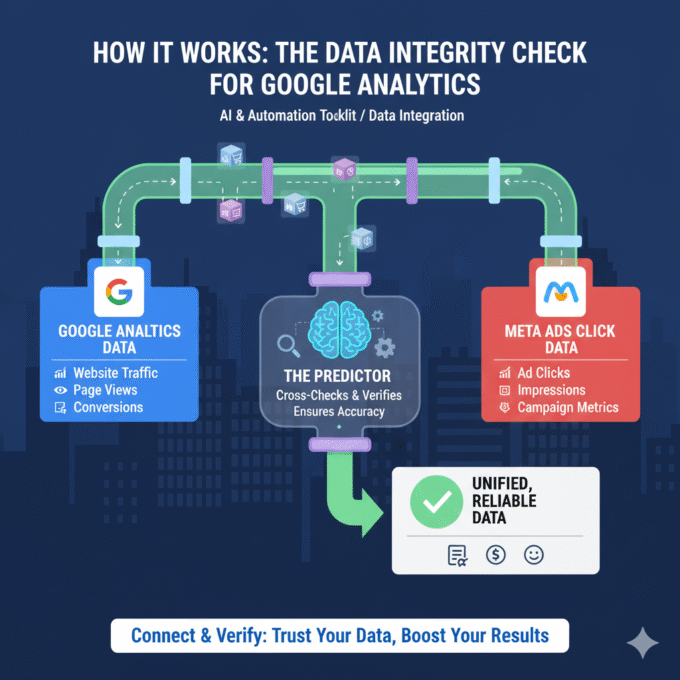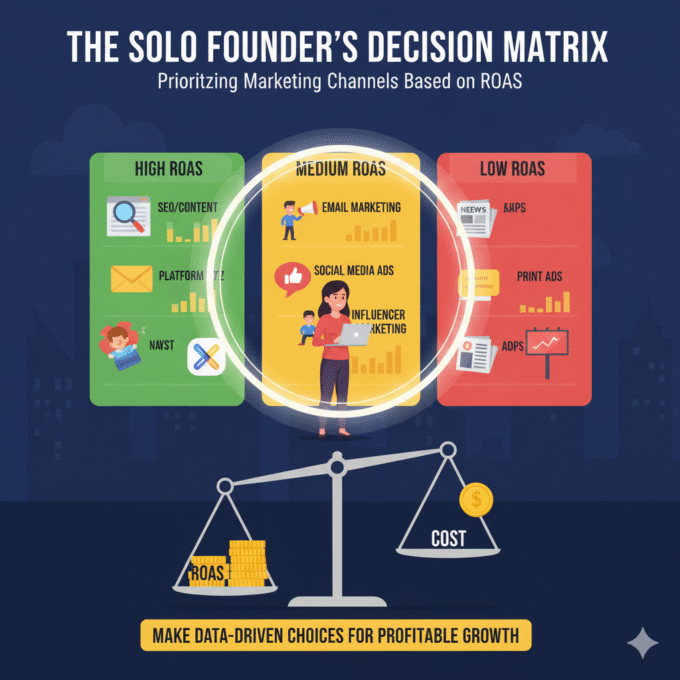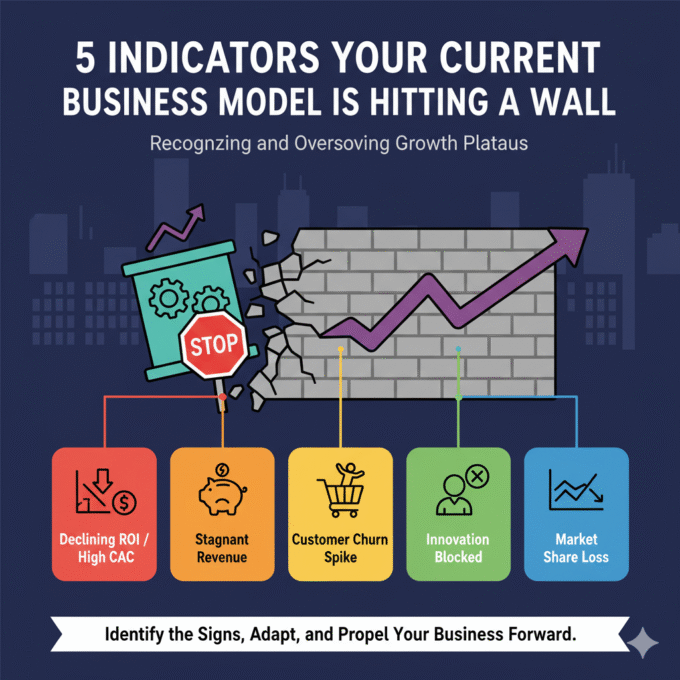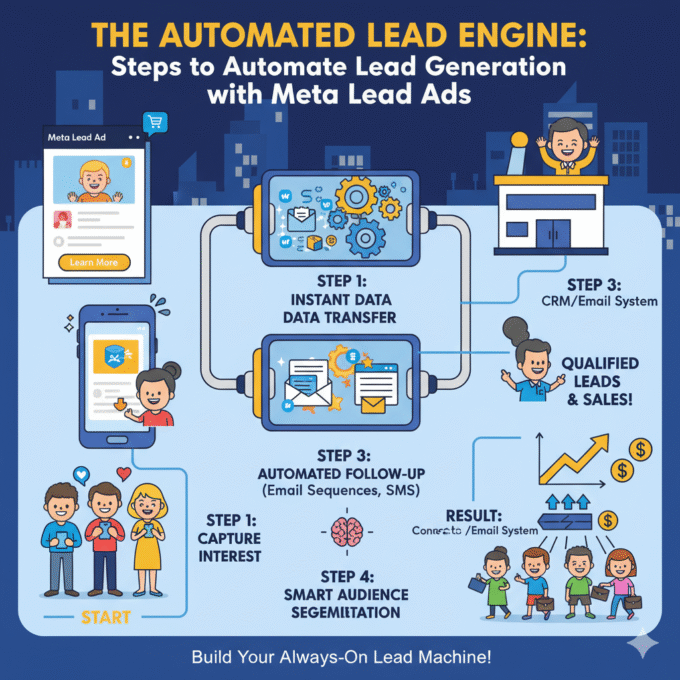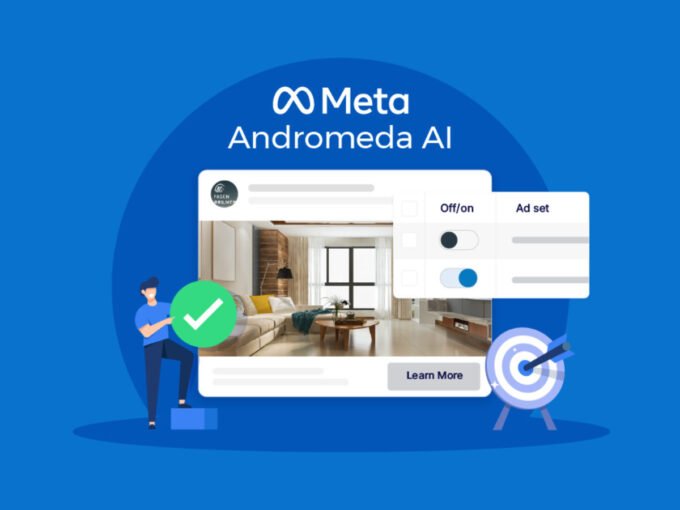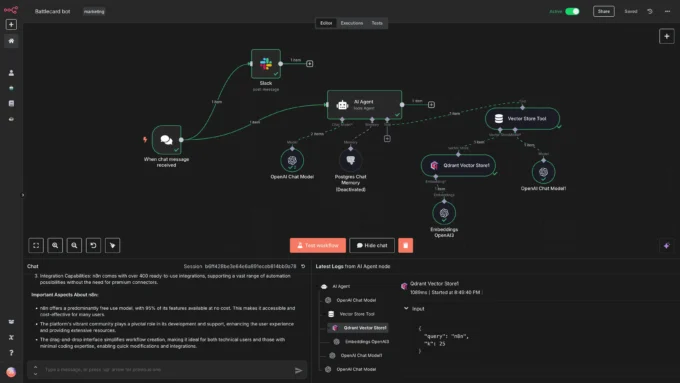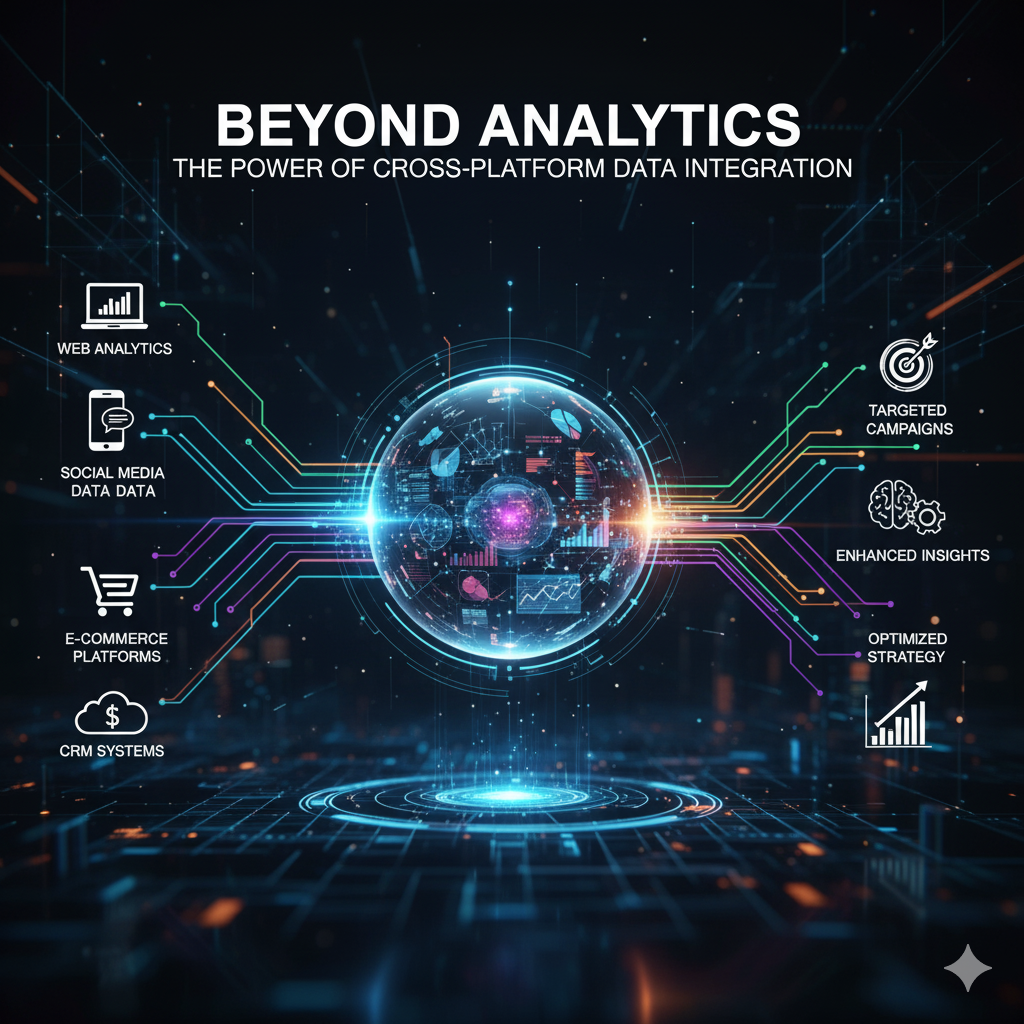
Beyond Analytics: The Power of Cross-Platform Data Integration
September 29, 20254 Mins read29 Views(Shopify + Meta + GA)
You’re a modern marketer, and your day is a constant dance between dashboards. You open Shopify to check your sales. You switch to Meta to analyze ad performance. Then you open Google Analytics to see where your traffic is coming from. Each platform tells a different story.
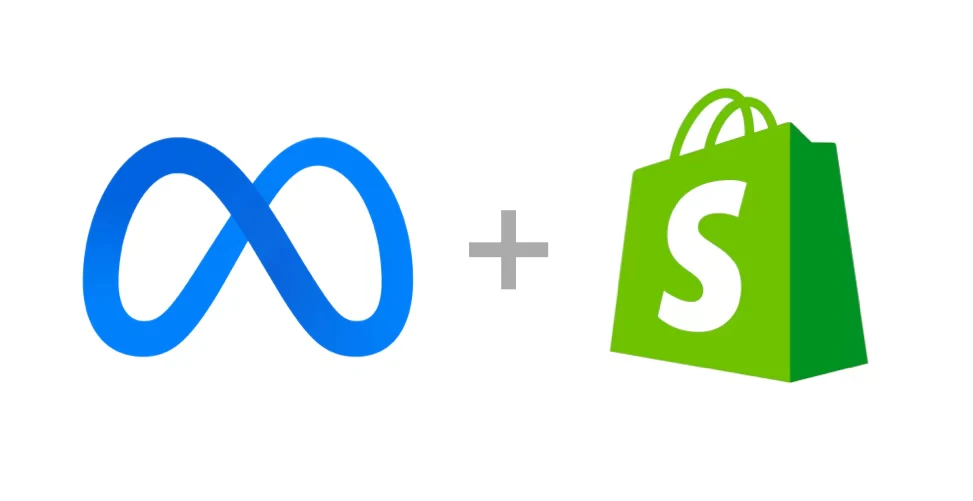
Your Shopify dashboard shows a healthy revenue number. Your Meta ads dashboard shows a seemingly mediocre return on ad spend (ROAS). Meanwhile, Google Analytics credits a blog post with a last-click conversion.1 You’re left with a fragmented, contradictory view of your business, and you have no idea which source is telling you the truth.
This is the fatal flaw of data silos in marketing. It’s the invisible barrier that separates your customer data, preventing you from seeing the complete journey from ad click to lifetime customer.2 Analyzing each platform in isolation is a surefire way to make bad decisions, waste ad spend, and miss massive opportunities for growth.
The future of profitable e-commerce marketing isn’t about better analytics within a single platform—it’s about cross-platform data integration. It’s about bringing every piece of your marketing ecosystem together into a single, unified view that reveals the full, holistic truth.
The Fatal Flaw: Why Siloed Data is Sabotaging Your Growth
Imagine you’re running a Meta ad campaign for a specific new product. Your dashboard shows that after a week, the campaign has a low ROAS of 1.5. A quick analysis might lead you to believe the campaign is a failure, so you pause it and reallocate the budget.
But what if a deeper, holistic analytics view told a different story?
- The Blurry Customer Journey: Your Meta ad was the first touchpoint that introduced a new customer to your brand.
- Misattributed Revenue: After clicking the ad, the customer browsed your site, saved a few products, and left. They returned three days later via a direct link from their browser and purchased three different products, not the one from the ad. In your siloed data, the purchase is not attributed to the ad, and the initial ad campaign is deemed a failure.
- The Wrong Decisions: By pausing the ad, you just shut down a highly effective top-of-funnel campaign that was consistently generating new, high-value customers. You just made a profit-costing decision because you couldn’t see the full picture.
This is a daily reality for businesses that rely on siloed data. You can’t connect ad spend to actual customer lifetime value. You can’t see which audiences or creatives are generating your most profitable repeat customers. You’re flying blind, making critical decisions based on incomplete information.
The E-commerce Data Triad: Shopify, Meta & Google Analytics
In the world of e-commerce, these three platforms form the core data triad. Each plays a different role, and each holds a crucial piece of the puzzle.
- Meta (Facebook/Instagram Ads): This is your engine for customer acquisition.3 Its data tells you about ad performance—clicks, impressions, cost, and conversions as tracked by the Meta pixel.4
- Google Analytics: This is your website analyst.5 It tells you what people are doing once they land on your site—which pages they visit, how long they stay, and what their journey looks like.
- Shopify: This is your source of truth. It holds the definitive revenue data, including the full cart value, repeat purchases, and customer-level insights that no other platform can provide.
The challenge is that these three systems don’t talk to each other. They each have their own definition of a “conversion,” their own way of attributing value, and their own limitations.6 This disconnect is the primary reason for marketing inefficiency.
The Solution: Cross-Platform Data Integration
Cross-platform data integration is the process of automatically pulling data from all of your platforms into a single, centralized database or dashboard.7 This creates a “single source of truth” for all of your marketing efforts.
By connecting Shopify, Meta, and Google Analytics, you can:
- See the True Customer Journey: Trace a customer from the specific Meta ad they clicked, through their browsing behavior on your site, to their final purchase details in Shopify. You can now see that the “low-performing” ad for Product A actually led to a high-value purchase of Products B and C, making the campaign a massive success.
- Analyze Real-Time Profitability: Calculate true ROAS by matching your Meta ad spend directly to the full revenue data from Shopify, including upsells and repeat purchases. You can instantly see which campaigns are truly profitable and which are not.
- Unlock Deeper Insights: With all your data in one place, you can ask powerful questions that were previously impossible to answer. Which ad creative is generating the highest lifetime value (LTV) customers? Which demographic segments have the lowest refund rate?
- Create a Foundation for Automation and Prediction: This integrated data is the bedrock for sophisticated automation rules and predictive modeling. You can build algorithms that automatically adjust bids based on which audiences are likely to become repeat customers, not just first-time buyers.8
Introducing the “Predictor Architecture”
The vision for a truly integrated marketing system goes beyond a simple dashboard. Imagine a central nervous system for your marketing data—a unified marketing dashboard we call the “Predictor Architecture.”
This architecture isn’t just about bringing data together; it’s about making it work for you. It’s a system with three core components:
- Connectors: Secure, seamless connections that pull clean data from every platform in your stack, from Shopify and Meta to your email service provider and CRM.9
- The Unified View: A single, beautiful dashboard that visualizes all your key metrics in a clear, easy-to-understand way. No more toggling between tabs.
- The Predictive Engine: The true magic. With all your data integrated, the system can use advanced analytics to predict future outcomes.10 It can tell you which of your campaigns is most likely to generate a customer with a high LTV, allowing you to invest your ad spend with confidence and precision.
The future of profitable marketing is no longer about managing individual ad campaigns; it’s about managing a complete, integrated system. Stop making decisions in the dark and start building an architecture that provides you with a truly holistic analytics view of your entire business. The ability to connect your data is no longer a luxury; it’s a competitive necessity.
More News
The Data Integrity Check for Google Analytics
How It Works: The Data Integrity Check for Google Analytics In the...
October 21, 2025The Solo Founder’s Decision Matrix: Prioritizing Marketing Channels Based on ROAS
The Solo Founder’s Decision Matrix As a solo founder, your most precious...
October 21, 20255 Indicators Your Current Business Model is Hitting a Wall
5 Indicators Your Current Business Model is Hitting a Wall The success...
October 21, 2025The Automated Lead Engine: Steps to Automate Lead Generation with Meta Lead Ads
Steps to Automate Lead Generation with Meta Lead Ads Meta Lead Ads...
October 20, 2025META Andromeda update main secret
Creative as a Data Signal: How Meta’s Andromeda Update Rewrote the Rules...
October 20, 2025Meta Andromeda: The Next-Generation AI Engine for Performance Growth
I. Executive Summary: The Andromeda Paradigm Shift 1.1. Introduction to the AI...
October 14, 2025The Data Integrity Check for Google Analytics
How It Works: The Data Integrity Check for Google Analytics In the...
October 21, 2025The Solo Founder’s Decision Matrix: Prioritizing Marketing Channels Based on ROAS
The Solo Founder’s Decision Matrix As a solo founder, your most precious...
October 21, 20255 Indicators Your Current Business Model is Hitting a Wall
5 Indicators Your Current Business Model is Hitting a Wall The success...
October 21, 2025The Automated Lead Engine: Steps to Automate Lead Generation with Meta Lead Ads
Steps to Automate Lead Generation with Meta Lead Ads Meta Lead Ads...
October 20, 2025


